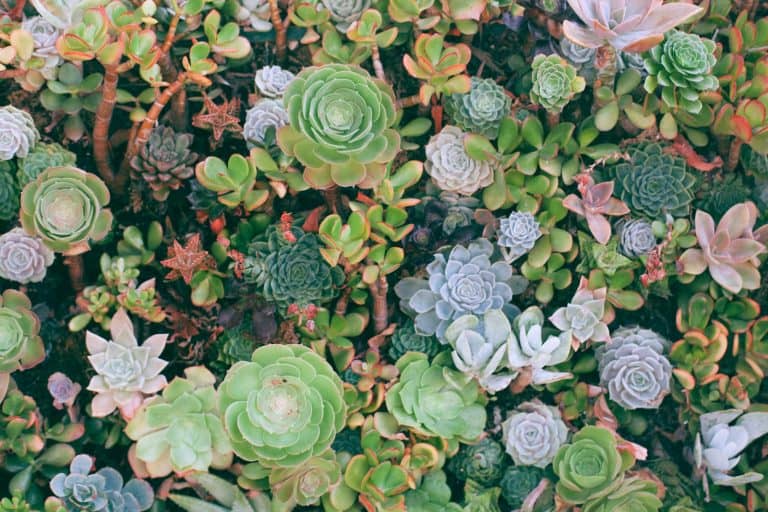Succulent plants are easy to care for, but they do require a lot of attention in order to thrive and grow well.
People are often confused by the frequency that succulents should be watered. The truth is, there really isn’t a set rule for how often to water your plants. It all depends on what kind of plant you have and its size.
The problem with succulents is that they have a very different watering schedule than many other types of plants. While you may think that you would just water them when the soil starts looking dry, this isn’t actually true.
How do you know when a succulent needs water?
The best way to know if your plant needs water, is to observe the plant closely.
Succulents are able to survive for long periods without water by storing moisture in their leaves. A leaf with sufficient water is firm to touch. When a succulent begins to get thirsty, its leaves may begin to droop or shrivel as the amount of water stored in them is depleted.
The best time to water your plants is when the soil around them is dry, not wet. This means that if you have a pot with a drainage hole in it, you need to wait until the soil has dried out before watering again. It is a good idea to test if the soil is dry by sticking your finger an inch or so into the soil as it may still be damp below the surface. Alternatively you could use something like a chopstick to poke into the soil and check if there is any wet soil on it when removed.
Indoor plants vs outdoor plants
Frequent watering is important for indoor plants, but too often people think they need to be watered every day. As a rough guide, indoor succulents tend to require watering every 7-14 days in the warmers months & every 3-4 weeks during winter months. It is important to water thoroughly, but wait for the soil to dry out completely before re-watering.
Unlike their indoor counterparts, succulents grown outdoors have much more varied water requirements depending on the climate they are grown in. The water succulents outdoors require, depends on the amount of rainfall the area receives. The majority of succulents originate from arid climates and although they would benefit from additional watering assistance, they have often adapted to suit their surroundings and during a drought, can often go month after month, if not years without extra water. In areas with regular rainfall, outdoor succulents may never require additional watering.
Why is drainage so important?
Succulents require a well drained soil to develop healthy roots. Specialist potting mixes are available from garden centres, but you can create your own succulent soil mix using regular potting soil and then adding additional drainage mediums such as perlite, coarse sand and porous rocks, to prevent waterlogged soil.
Whilst succulents can be grown in a pot without a drainage hole, there is a greater chance that overwatering can occur, so proper drainage is extremely important. A pot without drainage holes cannot disperse any excess water. If a plants roots remain damp for long periods, they can often develop root rot, which can be fatal for the plant.
What happens if you give your succulent too much water?
When it comes to watering succulents, you need to pay attention to the amount of water you’re giving them. An overwatered succulent is likely to develop root rot if the soil remains damp.
Excess water can also cause scarring in the leaf surface called edema. These scars are usually raised and are rough in texture. In some cases overwatering can result in the leaves splitting.
A final word on watering
In conclusion, observation of the plant is very important in deciding how often to water succulents rather than having a set schedule for regular watering. In order to keep your succulents alive, it is better to underwater, leaving your plant with dry soil rather than soggy soil. Succulents can survive for long periods in dry conditions and it is much easier to revive a thirsty plant than save a plant with damage from overwatering.

